I currently make a system consisting of a plastic enclosure which contains an MCU talking to 7 ADCs using 2MHz SPI over wires about 5cm long.

The problem is that I'm concerned about EMI. Everything I have read suggests that any kind of digital signal that's not safely on a PCB in a grounded metal chassis will radiate too much to pass EMI testing. I guess this would include I2C as well.
Is this likely to fail EMI testing? What can I do about this?
I am looking for any kind of answers, including "Use a different bus / ADC", but not including answers that involve mechanical changes like: "Put all the ADCs on the same PCB" or "Put the whole thing in a metal box". I am especially interested in Low-EMI alternatives to SPI including differential buses.
Here is some relevant information about the application. Please let me know if you need to know more things:
- 6 wires go to each ADC board (Power, GND, CS, CLK, MOSI, MISO).
- ADCs are currently MCP3208 (Microchip 8-channel, 12-bit)
- I am working in a desperately space constrained application, so adding shielding to the wires isn't really an option.
- It would be nice to use some kind of differential bus (one or two pairs only), but the only ADCs with differential communication seem to be multi-MSPS LVDS types.
- CAN is probably too slow, and also kind of bulky for such a space constrained application.
- Sample rate: I need to sample every channel at 1kHz.
Added:
Just to give an idea of the space constraints:

Here you can see one of the ADC PCBs. This one actually has an MCP3202 instead of an MCP3208, but it's compatible(ish). It's in a TSSOP 8 package. The PCB is 11mm x 13mm. The black cable is 2mm diameter. As you can see, there isn't even space for a connector and the wires are soldered directly to the PCB, then potted. The lack of connector is due to surrounding space constraints rather than PCB space constraints.